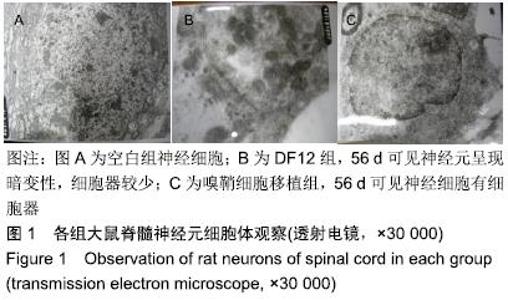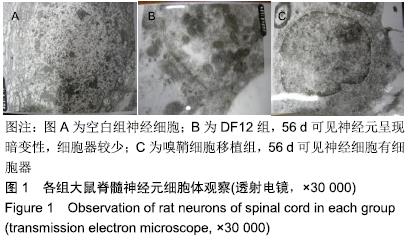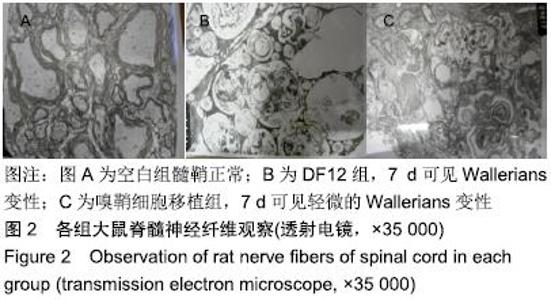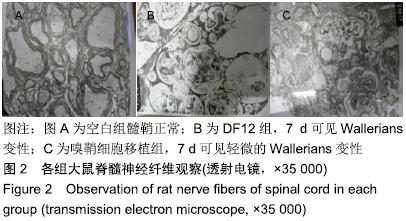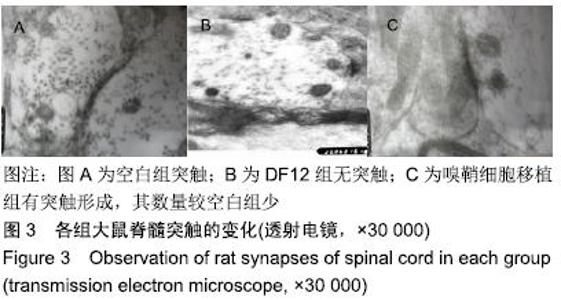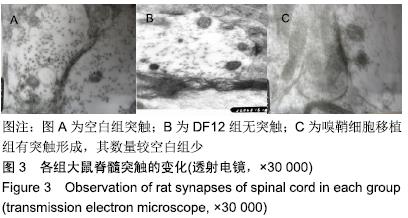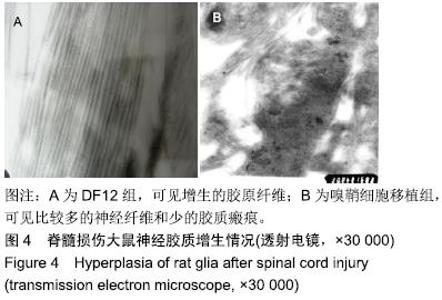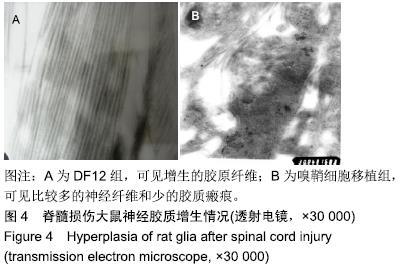[1] ROPPER AE, ROPPER AH.Acute Spinal Cord Compression.N Engl J Med.2017;376(14):1358-1369.
[2] SELVARAJAH S, HAMMOND ER, HAIDER AH, et al.The burden of acutetraumatic spinal cord injury among adults in the United States: anupdate.J Neurotrauma.2014;31(3):228-238.
[3] SILVA NA, SOUSA N, REIS RL, et al.From basic to clinical :a comprehensivere review onspinal cord injury.Prog Neurobiol.2014;114: 25-57.
[4] GOULÃO M, LEPORE AC.iPS cell transplantation for traumatic spinal cord injury. Curr Stem Cell Res Ther.2016;11(4):321-328.
[5] KADOYA K, LU P, NGUYEN K, et al. Spinal cord reconstitutionwith homologous neural grafts enables robust corticospinal regeneration. Nat Med.2016;22(5):479-487.
[6] MUNISWAMI DM, KANTHAKUMAR P, KANAKASABAPATHY I, et al. Motor Recovery after Transplantation of Bone Marrow Mesenchymal Stem Cells in Rat Models of Spinal Cord Injury. Ann Neurosci.2019; 25(3):126-140.
[7] KANNO H, PEARSE DD, OZAWA H, et al.Schwann cell transplantation for spinal cord injury repair: its significanttherapeutic potential and prospectus.Rev Neurosci.2015;26(2):121-128.
[8] GÓMEZ RM, SÁNCHEZ MY, PORTELA-LOMBA M, et al.Cell therapy for spinal cord injury with olfactory ensheathing glia cells (OECs).Glia. 2018;66(7):1267-1301.
[9] PREWITT CM, NIESMAN IR, KANE CJ, et al.Activated macrophage/ microglial cells can promote there generation of sensory axons into the injured spinal cord .Exp Neurol.1997;148(2):433-443.
[10] LI Y, FIELD PM, RAISMAN G. Regeneration of adult rat corticospinal axons induced by transplanted olfactory ensheathing cells.JNeurosci. 1998;18:10514-10524
[11] 杨浩,游思维,王春婷,等.嗅鞘细胞的培养纯化及形态学特征[J].解剖科学进展,2002,8(2)101-106.
[12] 王国毓;贺西京;袁普卫;等.嗅鞘细胞移植修复大鼠脊髓损伤的组织病理学变化[J].中国组织工程研究与临床康复,2010,14(6):1053-1057
[13] HAYTA E, ELDEN H.Acute spinal cord injury: A review of pathophysiology and otential ofnon-steroidal anti-inflammatory drugs for pharmacological intervention.J Chem Neuroanat. 2018;87:25-31.
[14] BALENTINE JD.Pathology of experimental spinal cord trauma. Ultrastructure of axons and myelin .Lab Invest.1978;39:25.
[15] BRESNAHAN JC.An electron microscopic analysis of axonal alterations following blunt contusion of the spinal cord of the rhesus monkey (Macaca mulatta).J Neurol Sci.1978;37:59.
[16] THORNTON MA, MEHTA MD, MORAD TT, et al.Evidence of axon connectivity across a spinal cord transection in rats treated with epidural stimulation and motor training combined with olfactory ensheathing cell transplantation.Exp Neurol. 2018;309:119-133.
[17] LI Y, LI D, RAISMAN G.Functional repair of rat corticospinal tract lesions does not require permanent survival of an immunoincompatible transplant.Cell Transplant.2016;25:293-299.
[18] WEISHAUPT N, BLESCH A, FOUAD K. BDNF: The career of a multifaceted neurotrophin in spinal cord injury. Exp Neurol.2012;238(2): 254-264.
[19] FU J, WANG H, DENG L, et al.Exercise training promotes functional recovery after spinal cord injury. Neural Plast.2016;2016: 4039580.
[20] GORSKI JA, ZEILER SR, TAMOWSKI S, et al.Brain-derived neurotrophic factor is required for the maintenance of cortical dendrites. J Neurosci.2003;23(17):6856-6865.
[21] ALONSO-VANEGAS MA,FAWCETT JP,CAUSING CG,et al. Characterization of dopaminergic midbrain neurons in a DBH: BDNF transgenic mouse.J Comp Neurol.1999;413(3):449-462.
[22] 来东兵,黄秉仁.神经营养素-3( NT-3)的结构与功能[J].医学研究通讯, 1999,28(3):27-29.
[23] LANNOTTI C, PING ZHANG Y, SHIELDS CB, et al.A neuroproteetive role of glial cell line-derived neurotrophic factor following moderate spinal cord contusion injury.Exp Neurol.2004;189(2):317-332.
[24] 李剑锋,闫金玉,夏润福,等.脊髓损伤胶质瘢痕形成及星形胶质细胞作用的研究与转化意义[J].中国组织工程研究,2016,20(37):5609-5614
[25] CHUNG WS, ALLEN NJ, EROGLU C. Astrocytes control synapse formation, function, and elimination. Cold Spring Harb Perspect Biol. 2015;7(9):a020370.
[26] PEKNY M, PEKNA M.Astrocyte reactivity and reactive astroglosis: costs and benefits.Physiol Rev. 2014;94(4):1077-1098.
[27] MUKHAMEDSHINA YO, GRACHEVA OA, MUKHUTDINOVA DM, et al.Mesenchymal stem cells and the neuronal microenvironment in the area of spinal cord injury.Neural Regen Res. 2019;14(2):227-237.
[28] LIDDELOW SA, BARRES BA.Reactive astrocytes: production, function, and therapeutic potential. Immunity. 2017;46(6):957-967
[29] ANDERSON MA, BURDA JE, REN Y, et al.Astrocyte scar formation aids central nervous system axon regeneration.Nature.2016; 532(7598):195-200.
[30] PEREZ_BOUZA A, WIGLEY CB, NACIMIENTO W, et al. Spontaneous orientation of transplanted olfactory glia influences axonal regeneration. Neuroreport.1998;9(13):2971-2975.
[31] KHANKAN RR, GRIFFIS KG, HAGGERTY-SKEANS JR, et al.Olfactory ensheathing cell transplantation after a complete spinal cord transection mediates neuroprotective and immunomodulatory mechanisms to facilitate regeneration.Neurosci. 2016;36(23):6269-6286.
[32] RAMÓN-CUETO A, PLANT GW, AVILA J, et al.Long-distance axonal regeneration in the transected adult rat spinal cord is promoted by olfactory ensheathing glia transplants.J Neurosci.1998;18(10):3803-3815.
|
